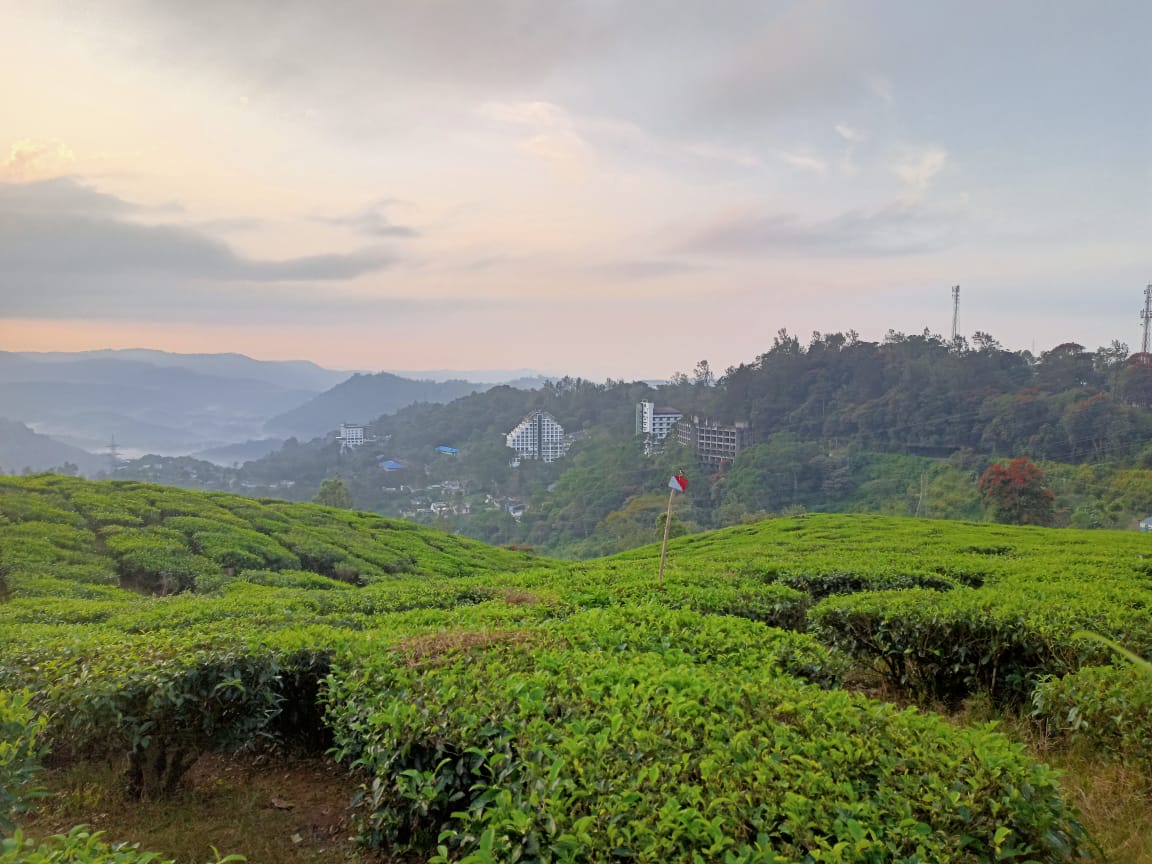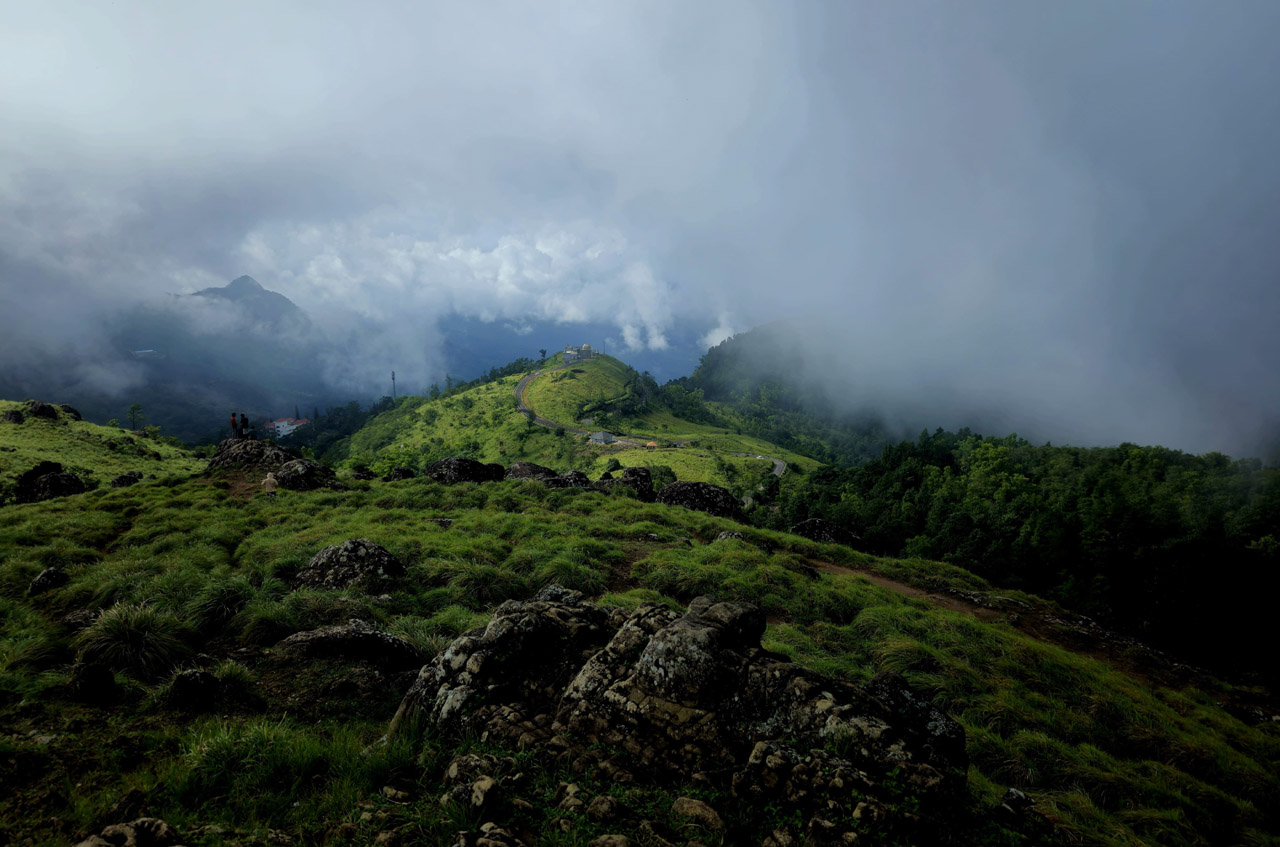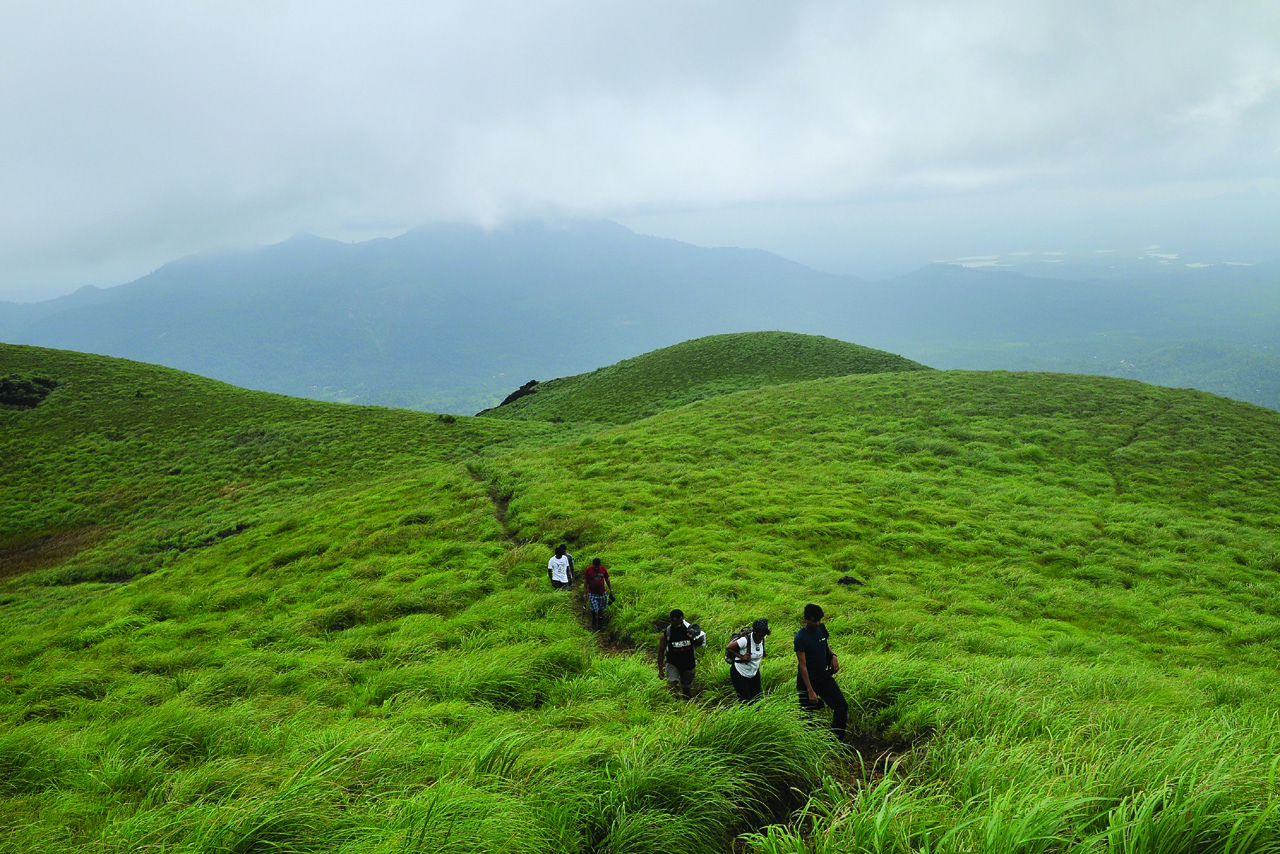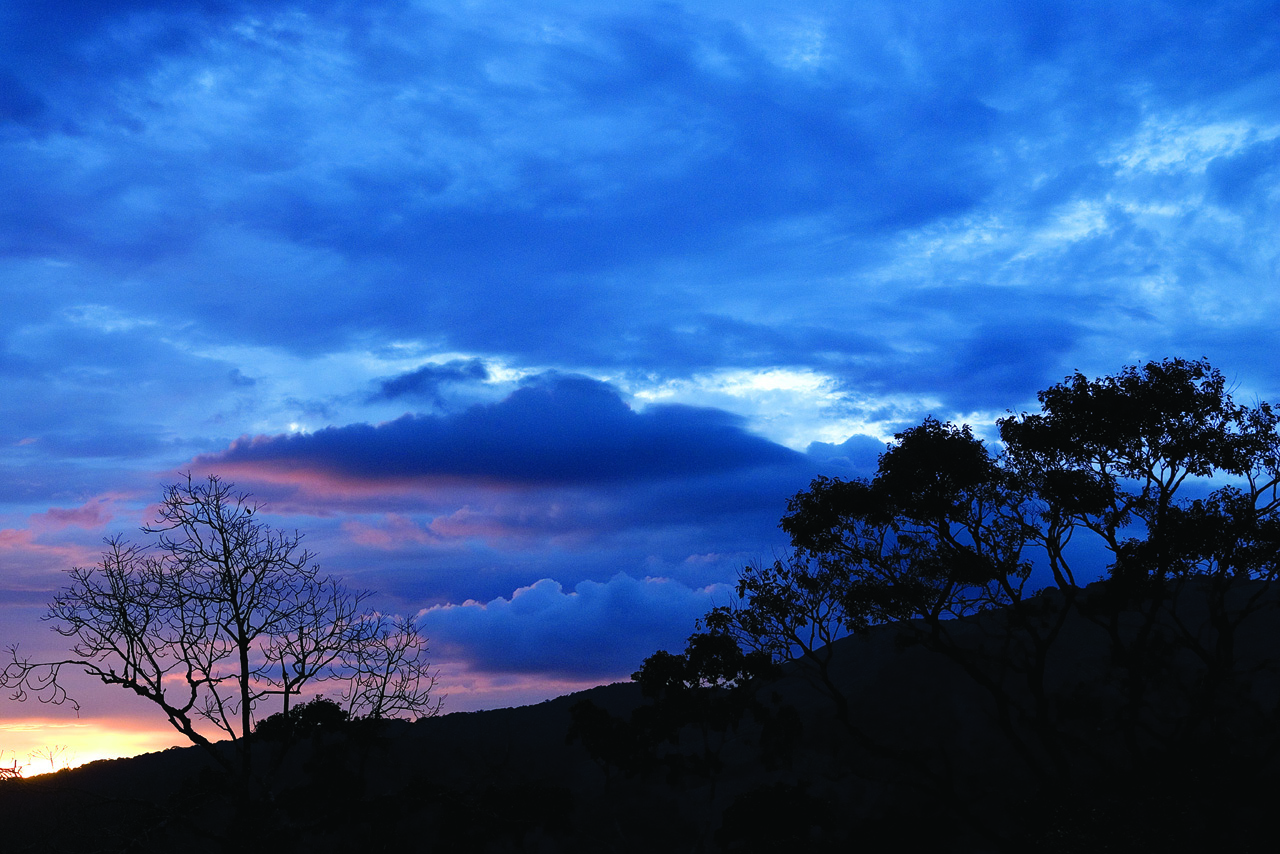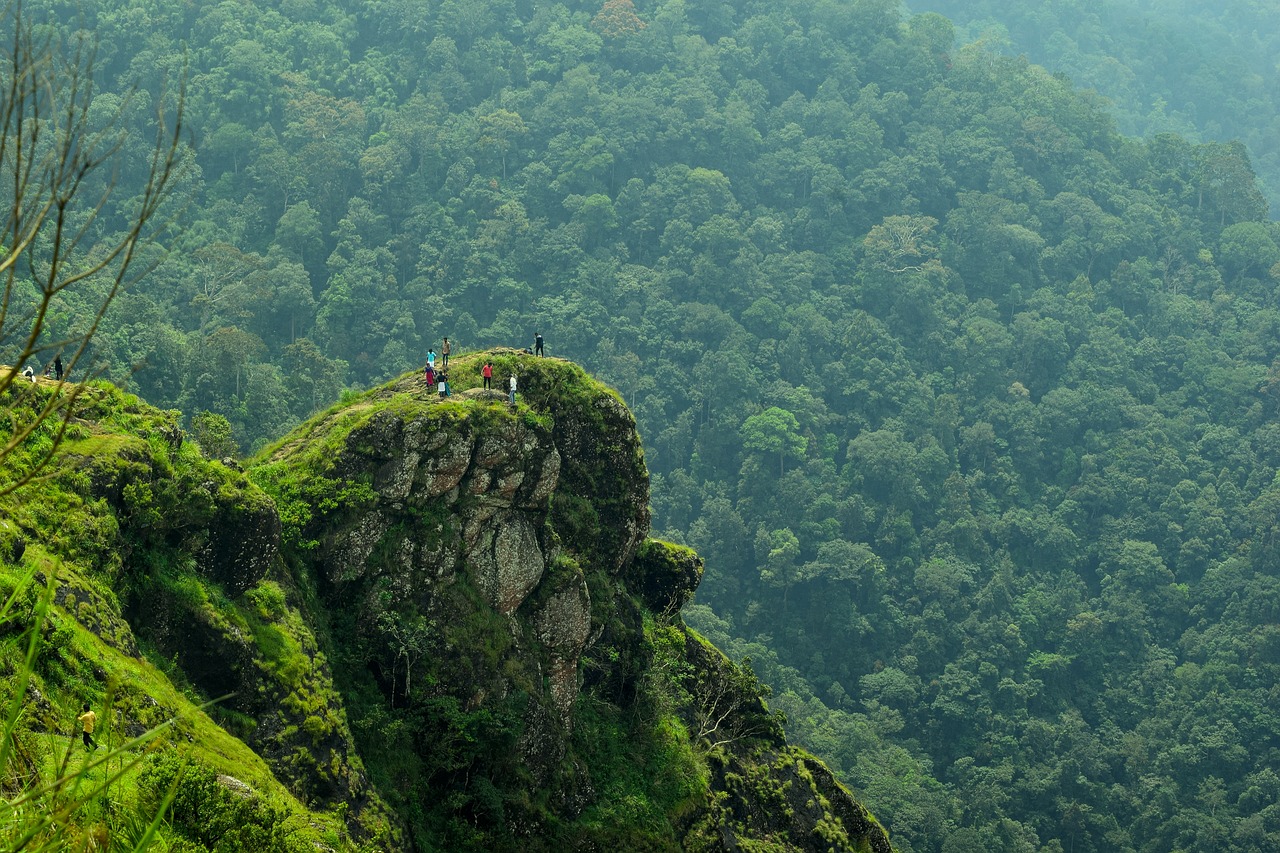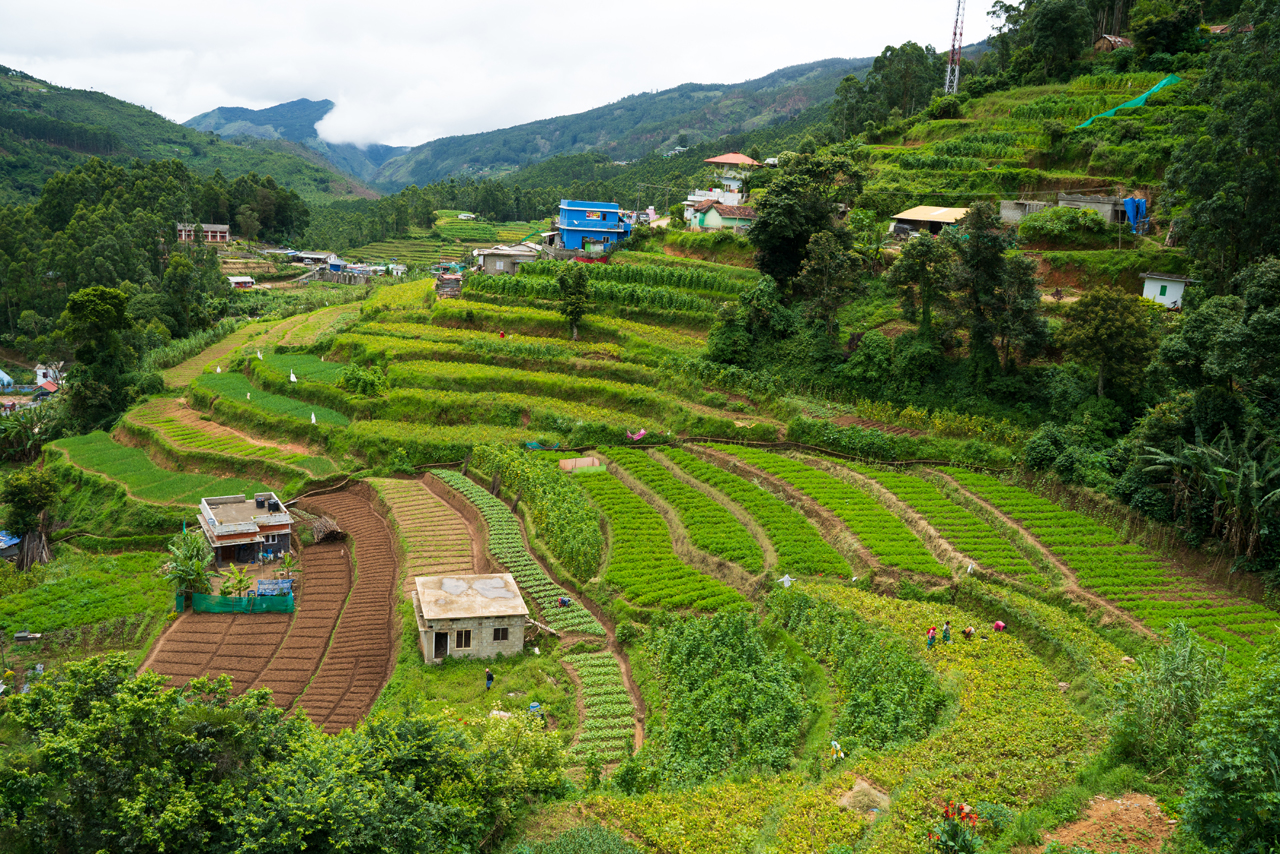Munnar: Where Misty Peaks Whisper Tales of Paradise
Munnar, a jewel nestled in the Western Ghats of Kerala, often referred to as "God's Own Country," is more than just a picturesque hill station. It's an immersive experience, a symphony of verdant landscapes, fragrant air thick with the aroma of tea, and a tranquility that soothes the soul. For the discerning traveler, Munnar offers a captivating blend of natural beauty and curated experiences that leave an indelible mark.
Reaching the Emerald Hills: Your Travel Guide
Getting to Munnar is an integral part of the adventure. Here's how you can reach this captivating destination:
By Air: The nearest major airport is Cochin International Airport (COK), located approximately 110 kilometers (about 3.5 hours by road) from Munnar. Taxis and pre-booked transfers are readily available at the airport.
By Road: Munnar is well-connected by road to major cities in Kerala and Tamil Nadu. Kerala State Road Transport Corporation (KSRTC) buses operate regular services. Private taxis and tourist buses offer comfortable travel options. The scenic drive through winding mountain roads is an experience in itself.
By Train: The nearest railway stations are Aluva (around 110 km) and Ernakulam Junction (around 130 km). From the railway stations, you can hire a taxi or take a bus to Munnar.
A Tapestry of Emerald: The Tea Estates - A Traveler's Perspective
The iconic image of Munnar is undoubtedly its sprawling tea estates, a seemingly endless carpet of emerald green cascading down the undulating hills. These estates, some dating back to the colonial era, are not just agricultural lands; they are living, breathing monuments to the region's history and economy.
"The tea of Munnar has a distinctive flavour, a result of the high altitude and the unique climate. It's a taste of the mountains themselves." - Traditional Tea Estate Manager, Munnar
For travelers, exploring these estates offers numerous opportunities:
Tea Factory Visits: Many estates offer guided tours of their tea factories, providing insights into the fascinating process of tea production, from plucking to packaging. You can also sample different varieties of fresh tea.
Tea Estate Walks and Photography: Wander through the manicured rows of tea bushes, breathe in the fragrant air, and capture stunning photographs of the picturesque landscapes.
Stay in Plantation Bungalows: Experience the charm of staying in colonial-era bungalows nestled amidst the tea gardens, offering a unique and tranquil retreat.
Beyond the Greens: Nature's Bounty Unveiled - Must-Visit Spots
While tea dominates the landscape, Munnar's allure extends far beyond its plantations. The region is a biodiversity hotspot, home to a variety of flora and fauna, many of which are endemic to the Western Ghats. Here are some key attractions for travelers:
Eravikulam National Park: Witness the endangered Nilgiri Tahr in its natural habitat and enjoy breathtaking views of the rolling grasslands and shola forests. Remember that the park may have temporary closures for the calving season, so check before your visit.
Anamudi Peak: While direct access might be restricted, the viewpoints en route offer stunning panoramic vistas. Trekking in the surrounding areas is a popular activity (permits may be required).
Mattupetty Dam and Echo Point: Enjoy boating in the serene waters of Mattupetty Dam and experience the natural echo phenomenon at Echo Point. The surrounding area also offers opportunities for short hikes.
Top Station: Offering magnificent views of the Western Ghats and the Theni district of Tamil Nadu, Top Station is a must-visit viewpoint.
Kundala Lake: Enjoy a leisurely Shikara boat ride on this picturesque lake surrounded by rolling hills and lush greenery. The blooming of cherry blossoms (seasonal) adds to its beauty.
Curated Experiences: Enhancing Your Munnar Journey
Munnar has evolved to cater to the diverse interests of tourists, offering a range of curated experiences:
Spice Plantation Tours: Immerse yourself in the aromatic world of spices. Many plantations offer guided walks, allowing you to learn about the cultivation and medicinal uses of various spices and purchase fresh produce.
Ayurvedic Spa and Wellness Centers: Rejuvenate your mind and body with traditional Ayurvedic treatments and massages amidst the tranquil surroundings.
Kathakali and Other Cultural Performances: Witness the vibrant art forms of Kerala, offering a glimpse into the rich cultural heritage of the region.
Trekking and Adventure Activities: Munnar offers various trekking trails catering to different fitness levels. Adventure enthusiasts can also explore options like rock climbing and rappelling (ensure you choose reputable operators).
Shopping for Tea and Spices: Don't leave Munnar without purchasing fresh tea and aromatic spices from local outlets and plantation stores.
pMunnar, therefore, is not just a destination to be seen; it's a place to be experienced. The cool mountain air, the stunning vistas, and the array of activities create a holistic retreat that rejuvenates the mind, body, and soul. Plan your trip wisely, considering the best time to visit (typically September to May for pleasant weather), and get ready to be enchanted by the magic of Munnar.
Munnar: Whispers of Life, Healing Secrets, and Hidden Gems
While Munnar's allure as a tourist destination is undeniable, delving deeper reveals the rich tapestry of life that thrives in its valleys and hills. The resilience and harmony of the local communities, the profound connection they share with nature, and the hidden medicinal treasures of the region offer a different, equally captivating perspective.
The Heartbeat of the Hills: Life and Livelihood
The lifeblood of Munnar is intricately linked to its plantations. Generations of families have toiled in the tea estates, their lives dictated by the rhythm of the seasons and the ebb and flow of the tea industry. Their knowledge of the land, passed down through centuries, is invaluable.
"Our lives are intertwined with these hills. The tea provides us with our sustenance, but it's more than just a job; it's our heritage." - A Tea Plantation Worker, Chinnakanal
For travelers seeking a more authentic experience, engaging with the local communities can be deeply rewarding:
Village Visits: Explore the smaller villages surrounding the main tourist areas to witness the daily lives of the people, their traditional homes, and their unique culture. Remember to be respectful and mindful of their privacy.
Interacting with Plantation Workers: While on tea estate tours, take the opportunity to respectfully interact with the workers, learn about their experiences, and understand the challenges and rewards of their labor.
Supporting Local Businesses: Choose to stay in locally-owned guesthouses, eat at local restaurants, and purchase souvenirs from local artisans to directly contribute to the community's well-being.
Nature's Pharmacy: The Medicinal Wealth of the Western Ghats
The biodiversity of Munnar extends beyond its aesthetic appeal; it holds a treasure trove of medicinal plants used in traditional Ayurvedic practices. The shola forests and high-altitude grasslands are home to numerous species with potent healing properties.
Neelakurinji (Strobilanthes kunthiana): While famous for its blooming spectacle, this plant also has traditional medicinal uses. Its leaves are sometimes used in local remedies.
Various Ayurvedic Herbs: The region is rich in plants like Adhatoda vasica (Vasaka) for respiratory ailments, Curcuma longa (Turmeric) for its anti-inflammatory properties, and numerous other species used in traditional formulations. Exploring spice plantations often provides insights into the medicinal uses of these plants.
Guided Nature Walks Focusing on Medicinal Plants: Some local guides specialize in showcasing the medicinal flora of the region, offering valuable knowledge about their traditional uses.
"The forests here are our pharmacy. Our ancestors have used these plants for generations to heal and maintain well-being. We must protect this knowledge and these natural resources." - A Traditional Ayurvedic Practitioner, Adimali (near Munnar)
Responsible tourism involves respecting and supporting the conservation efforts aimed at protecting this valuable biodiversity and the traditional knowledge associated with it.
Beyond the Obvious: Unveiling Hidden Gems for the Curious Traveler
Munnar holds secrets that lie beyond the popular tourist spots, offering unique experiences for those willing to explore further:
Chinnar Wildlife Sanctuary: Venture into the rain shadow region to experience a different ecosystem, home to the endangered Giant Grizzled Squirrel and diverse flora and fauna. It offers opportunities for trekking and wildlife spotting (permits required).
Dolmens and Ancient Burial Sites: Discover remnants of ancient civilizations scattered across the region, offering a glimpse into the area's rich history and archaeological significance. Hire a local guide to learn more about these sites.
Local Festivals and Traditions: If your visit coincides with local festivals, take the opportunity to witness the vibrant cultural expressions, traditional music, and rituals of the region.
Anaerangal Dam: A less crowded alternative to Mattupetty Dam, offering serene boat rides and beautiful views.
Lockhart Gap View Point: Offers stunning panoramic views of the valleys and mist-covered hills, often less crowded than other popular viewpoints.
Munnar, therefore, is a destination that rewards those who venture beyond the well-trodden paths. It's a place where the whispers of the wind carry tales of resilience, where the forests hold ancient healing secrets, and where the warmth of the people adds another layer of beauty to an already enchanting land. By appreciating both its natural splendor and the vibrant life that thrives within it, visitors can truly experience the essence of this captivating hill station.
Wayanad: Nature's Green Embrace - A Traveler's Paradise
Nestled amidst the majestic Western Ghats of Kerala, Wayanad, meaning "the land of paddy fields," lives up to its name with its sprawling verdant landscapes, cascading waterfalls, and mist-clad mountains. This tranquil hill district offers a refreshing escape from the hustle and bustle of city life, beckoning travelers with its natural beauty and rich cultural heritage.
Journeying to the Green Haven: Your Travel Companion
Reaching the enchanting land of Wayanad is an experience in itself. Here's a guide to help you plan your journey:
By Air: The closest international airport is Calicut International Airport (CCJ), situated approximately 100 kilometers (about 3 hours by road) from Kalpetta, the main town in Wayanad. Taxis and buses are readily available for onward travel.
By Road: Wayanad boasts excellent road connectivity with major cities in Kerala and neighboring states like Karnataka and Tamil Nadu. Kerala State Road Transport Corporation (KSRTC) operates frequent bus services. Private buses and taxis offer comfortable and convenient travel options, especially from cities like Kozhikode, Bangalore, and Mysore. The scenic drive through winding ghat roads is a treat for the eyes.
By Train: The nearest railway station is Kozhikode (CLT), located around 85 kilometers from Kalpetta. From the railway station, you can hire a taxi or take a bus to reach various parts of Wayanad.
A Symphony of Green and White: Wayanad's Natural Attractions
Wayanad's primary allure lies in its breathtaking natural beauty, offering a diverse range of experiences for nature lovers and adventure seekers:
Chembra Peak – A Trekker's Paradise in Wayanad
Chembra Peak, the highest peak in Wayanad at an elevation of 2,100 meters above sea level, offers one of the most breathtaking trekking experiences in Kerala. Nestled within the lush Western Ghats, it stands as a crown jewel for adventure lovers and nature seekers alike.
The trek to Chembra Peak begins from the forest office at Meppadi, where visitors must obtain permission from the forest department. The trail is moderately challenging, making it suitable for both seasoned hikers and enthusiastic beginners. As you ascend, you'll be surrounded by dense shola forests, rolling tea estates, and panoramic vistas of the Wayanad plateau.
One of the most iconic sights during the trek is the heart-shaped lake, known locally as Hridaya Saras, which never dries up. This natural wonder is perched midway along the trail and has become a symbol of Chembra’s charm. Photographers, couples, and solo travelers often pause here to take in the serene beauty and capture memories.
Chembra Peak is not just a trekking destination; it's a sanctuary for biodiversity. The region is home to a variety of endemic flora and fauna, making it a favorite spot for ecologists and bird watchers. With mist-covered slopes and cool breezes, every moment on this trail feels magical and soul-refreshing.
Best time to visit Chembra Peak is from September to March, when the weather is pleasant and the visibility is high. Monsoon months, though lush, are risky due to slippery trails and leeches. Visitors are advised to carry water, wear proper trekking shoes, and respect local eco-guidelines.
Whether you're visiting Wayanad for adventure or to connect with nature, a trek to Chembra Peak is an experience that will linger in your heart. It beautifully encapsulates the eco-tourism spirit of Kerala and deserves a spot on every traveler’s itinerary.
Other attractions of Wayanad
Edakkal Cave: Journey back in time at these prehistoric rock shelters adorned with ancient carvings dating back to the Neolithic period. The climb to the caves offers panoramic views of the surrounding countryside.
Soochipara Falls (Sentinel Rock Waterfalls): Witness the majestic three-tiered waterfall cascading down rocky cliffs. It's a popular spot for trekking and enjoying the natural beauty. Be mindful of safety during the monsoon season.
Meenmutty Falls: Another stunning three-tiered waterfall, accessible through a challenging but rewarding trek through the forest.
Banasura Sagar Dam: Asia's second-largest earth dam, offering boat rides and picturesque views of the surrounding hills. The islands within the reservoir add to its charm.
Kuruva Island: Explore this serene island, a cluster of dense evergreen forests on the Kabini River. It's a haven for birdwatchers and nature enthusiasts (entry may be restricted during certain times for conservation).
Lakkidi View Point: Known as the "Gateway of Wayanad," this viewpoint offers stunning vistas of the winding ghat roads and the lush valleys below.
Engaging Experiences: Adding Spice to Your Wayanad Trip
Beyond sightseeing, Wayanad offers a variety of activities to enrich your travel experience:
Spice Plantation Visits: Wander through aromatic spice plantations, learning about the cultivation of pepper, cardamom, coffee, and other spices that thrive in the region. Many plantations offer guided tours and opportunities to purchase fresh spices.
Wildlife Sanctuaries: Explore the Wayanad Wildlife Sanctuary, home to diverse flora and fauna, including elephants, tigers, deer, and various bird species. Jeep safaris offer a chance to spot wildlife in their natural habitat.
Ayurvedic and Wellness Retreats: Rejuvenate your mind and body with traditional Ayurvedic treatments and therapies offered at various wellness centers amidst the tranquil surroundings.
Trekking and Adventure Activities: Wayanad offers numerous trekking trails catering to different fitness levels, as well as opportunities for ziplining and other adventure activities.
Exploring Tea and Coffee Estates: Similar to Munnar, Wayanad also has sprawling tea and coffee estates that offer scenic walks and insights into the cultivation of these beverages.
Wayanad, with its emerald landscapes and captivating attractions, promises an unforgettable escape into nature's embrace. Plan your itinerary to immerse yourself in its scenic wonders and experience the tranquility of this green paradise.
Wayanad: Unveiling the Soul - Life, Culture, and Hidden Treasures
While Wayanad's scenic beauty captivates every visitor, delving deeper reveals the vibrant life, rich cultural tapestry, and the enduring traditions of the people who call this green paradise home. Beyond the waterfalls and viewpoints lies a world of unique heritage and sustainable practices.
The Vibrant Tapestry of Tribal Culture and Heritage
Wayanad is home to a significant population of diverse tribal communities, including the Paniyas, Kurichiyas, Adiyas, and Ooralis. Each community boasts its own distinct customs, traditions, languages, art forms (like folk dances and music), and traditional knowledge systems.
- Exploring Tribal Settlements: With due respect and permission, visiting tribal settlements can offer a glimpse into their unique way of life, their connection with nature, and their traditional skills.
- Witnessing Traditional Art Forms: Experiencing tribal dances and musical performances provides a vibrant insight into their cultural expressions. Local cultural centers sometimes organize such events.
- Learning about Traditional Knowledge: Understanding their traditional knowledge of medicinal plants, sustainable forest practices, and agricultural techniques highlights their deep connection with the environment.
The Green Heart: Agriculture and Sustainable Practices
Beyond the prominent tea and coffee plantations, Wayanad's agricultural landscape is diverse, with spices like pepper, cardamom, cloves, and nutmeg flourishing alongside paddy fields and a variety of fruits and vegetables. Many local farmers are embracing sustainable and organic farming practices, contributing to the region's ecological balance.
Visiting Local Farms and Markets: Exploring local farms and markets provides an opportunity to witness the agricultural diversity and interact with the farmers.
Learning about Spice Cultivation: Understanding the cultivation and processing of the region's renowned spices offers an insightful experience.
Exploring Sustainable Initiatives: Discovering local initiatives promoting organic farming and sustainable agriculture showcases the community's commitment to environmental stewardship.
Echoes of the Past: History and Mythology
Wayanad's history is interwoven with ancient legends and historical events. Local folklore and ancient temples hold stories that connect the present with the past.
Exploring Ancient Temples: Visiting ancient temples like the Thirunelli Temple, believed to have mythological significance, offers a glimpse into the region's spiritual heritage.
Unraveling Local Legends: Engaging with local communities and guides can reveal fascinating stories and legends associated with various places in Wayanad.
Discovering Historical Sites: Beyond the well-known caves, exploring lesser-known historical sites can provide a deeper understanding of the region's past.
A Taste of Wayanad: Local Cuisine and Culinary Traditions
Wayanad's cuisine is a delightful blend of local ingredients and traditional recipes, often influenced by the spices grown in the region and the culinary practices of its tribal communities. Unique dishes and flavors await those willing to explore beyond standard restaurant fare.
Trying Traditional Tribal Cuisine: Seeking out opportunities to taste authentic tribal dishes can be a unique culinary adventure.
Exploring Local Eateries: Discovering small local restaurants and home-based food ventures can offer a taste of authentic Wayanadan flavors.
Learning about Local Ingredients: Understanding the use of locally sourced spices and agricultural produce in Wayanad's cuisine enhances the culinary experience.
Guardians of Green: Flora and Fauna Conservation Efforts
Recognizing the ecological significance of its biodiversity, Wayanad has ongoing efforts towards the conservation of its flora and fauna. Understanding these initiatives highlights the region's commitment to preserving its natural heritage.
Learning about Wildlife Conservation: Understanding the efforts to protect the Wayanad Wildlife Sanctuary and its inhabitants is crucial for responsible tourism.
Supporting Eco-Friendly Initiatives: Choosing eco-friendly accommodations and tours contributes to sustainable conservation efforts.
Respecting the Environment: As visitors, practicing responsible tourism by avoiding littering and respecting wildlife is essential for the long-term preservation of Wayanad's natural beauty.
By venturing beyond the typical tourist trails, visitors can truly connect with the soul of Wayanad – its resilient communities, its rich cultural heritage, its sustainable practices, and its deep-rooted connection with the natural world. This deeper exploration offers a more enriching and meaningful travel experience, leaving a lasting appreciation for this remarkable land.
Ponmudi – The Golden Peak of Southern Kerala
Ponmudi, meaning "Golden Peak" in Malayalam, is a picturesque hill station nestled in the southern stretch of the Western Ghats in Kerala. Located just 55 kilometers from Thiruvananthapuram, this serene destination is a haven for nature lovers, trekkers, and wellness seekers looking to escape the chaos of city life.
At an altitude of around 1,100 meters, Ponmudi welcomes you with rolling hills, mist-covered valleys, and narrow winding roads that offer thrilling views of the lush green surroundings. The drive itself is a treat, with 22 hairpin bends and scenic tea gardens that make the journey as memorable as the destination.
Ponmudi’s charm lies in its untouched natural beauty and tranquil environment. The region is rich in biodiversity and is part of the Agasthyakoodam biosphere reserve. Birdwatchers will find Ponmudi a delight, as it hosts several endemic and migratory species, including the Malabar grey hornbill and the rare butterfly *Travancore Evening Brown*.
The hill station is also a great starting point for various trekking trails. One of the most popular treks is to the Agasthyakoodam Peak, the second-highest peak in Kerala, which is accessible with special forest permission. The nearby Kallar River, Meenmutty Waterfalls, and Golden Valley are other attractions that showcase Ponmudi’s natural elegance.
Ponmudi experiences a cool and pleasant climate throughout the year, making it an ideal destination even during the summer months. The best time to visit is from November to March, when the skies are clear, and the greenery is at its peak after the monsoon.
Eco-tourism is actively promoted here, with sustainable accommodations and forest department-approved nature trails that ensure minimal impact on the environment. Visitors are encouraged to follow eco-friendly practices, making Ponmudi a perfect example of responsible travel in Kerala.
Whether you’re an adventure enthusiast, a couple seeking a romantic retreat, or a solo traveler looking to reconnect with nature, Ponmudi offers an experience that’s both calming and invigorating. It is a true gem in Kerala’s hill station map and a must-visit for anyone exploring the natural heritage of the state.
Vagamon: Where Verdant Hills Kiss the Clouds - An Enchanting Escape
Vagamon, a captivating hill station nestled in the Idukki district of Kerala, stands apart with its unique topography of rolling meadows, deep valleys, and mist-laden peaks. Unlike the densely forested hills of its counterparts, Vagamon's open grasslands, often referred to as the "Scotland of India," offer a distinct and breathtaking panorama. This serene haven invites travelers seeking tranquility, adventure, and a communion with nature in its most pristine form.
Reaching the Breezy Heights: Your Journey to Vagamon
Embarking on the journey to Vagamon is an experience in itself, with winding roads unveiling picturesque landscapes at every turn. Here's how you can reach this idyllic destination:
By Air: The nearest major airport is Cochin International Airport (COK), located approximately 100 kilometers (around 3 hours by road) from Vagamon. Taxis and pre-booked transport are readily available.
By Road: Vagamon enjoys good road connectivity with major towns and cities in Kerala and Tamil Nadu. State-run (KSRTC) and private buses operate regular services. Hiring a taxi or self-driving offers flexibility to explore the scenic routes. The drive from nearby towns like Erattupetta and Thekkady is particularly enchanting.
By Train: The nearest railway stations are Kottayam (around 65 km) and Ernakulam (around 100 km). From the railway stations, taxis and buses are available to reach Vagamon.
A Canvas of Green and Blue: Vagamon's Alluring Attractions
Vagamon's unique landscape offers a diverse range of attractions that cater to different interests:
Vagamon Meadows (Motta Kunnu): The vast, undulating grasslands are the hallmark of Vagamon. These open meadows, carpeted in vibrant green, offer breathtaking panoramic views of the surrounding valleys and hills. They are perfect for leisurely walks, picnics, and soaking in the serene atmosphere.
Thangalpara: A significant religious site with a large spherical rock formation believed to be associated with a Sufi saint. The viewpoint here offers stunning vistas of the surrounding landscape.
Marmala Waterfalls: Cascading down several tiers, this picturesque waterfall is a refreshing sight. The journey to the falls involves a trek through scenic trails.
Pine Forests: Wander through the dense and enchanting pine forests, creating a serene and almost mystical atmosphere. These forests are ideal for peaceful walks and photography.
Vagamon Lake: A serene artificial lake offering boating opportunities amidst the picturesque surroundings.
Indo-Swiss Project: A floriculture project showcasing a variety of beautiful flowers and plants. It's a treat for nature lovers and offers colorful photo opportunities.
Thrills in the Hills: Adventure Activities in Vagamon
Vagamon's unique terrain makes it a hub for adventure enthusiasts:
Paragliding: Vagamon is renowned as one of the best paragliding spots in India, thanks to its ideal wind conditions and vast open spaces. Experiencing a tandem flight over the breathtaking valleys is an unforgettable adventure. Numerous certified operators offer paragliding experiences.
Trekking: The hills and valleys around Vagamon offer numerous trekking trails, ranging from easy nature walks to more challenging climbs. Explore the diverse flora and fauna and enjoy stunning viewpoints.
Rock Climbing and Rappelling: The rocky cliffs in certain areas of Vagamon provide opportunities for rock climbing and rappelling under the guidance of experienced instructors.
Cycling: The winding roads and trails of Vagamon are perfect for cycling enthusiasts, offering a chance to explore the scenic beauty at your own pace.
Beyond the Scenery: Experiencing the Essence of Vagamon
While the natural beauty and adventure activities are primary draws, Vagamon also offers glimpses into its local life and culture:
Local Cuisine: Indulge in the flavors of Kerala at local eateries, savoring traditional dishes prepared with fresh, locally sourced ingredients.
Spice Plantations: Explore nearby spice plantations and learn about the cultivation of cardamom, pepper, and other aromatic spices that thrive in the region.
Cultural Encounters: Interact with the friendly local communities and learn about their way of life and traditions.
Serenity and Tranquility: Ultimately, one of Vagamon's greatest appeals is its peaceful and unhurried atmosphere, offering a true escape from the stresses of modern life.
Vagamon, with its unique blend of rolling meadows, adventure opportunities, and serene ambiance, offers a refreshing and memorable travel experience. Whether you seek adrenaline-pumping activities or simply a tranquil retreat amidst nature's beauty, Vagamon promises an enchanting escape that will leave you rejuvenated and inspired.
Nelliampathy: The Undiscovered Jewel of Kerala - A Tranquil Retreat in the Western Ghats
Nestled high in the Palakkad district of Kerala, Nelliampathy remains a relatively undiscovered gem, offering a serene and unspoiled escape into the heart of the Western Ghats. Unlike its more crowded counterparts, Nelliampathy exudes an old-world charm with its sprawling tea and coffee plantations, mist-covered peaks, and pristine natural beauty. This tranquil haven beckons travelers seeking solitude, breathtaking vistas, and an authentic connection with nature.
Ascending to Serenity: Your Journey to Nelliampathy
The drive to Nelliampathy is an integral part of its allure, a scenic ascent through winding ghat roads flanked by lush forests and cascading waterfalls. Here's how you can reach this tranquil retreat:
By Air: The nearest major airport is Cochin International Airport (COK), located approximately 120 kilometers (around 3.5–4 hours by road) from Nelliampathy. Coimbatore International Airport (CJB) in Tamil Nadu is also relatively close, around 110 kilometers away. Taxis and pre-booked transport are readily available from both airports.
By Road: Nelliampathy is well-connected by road to major towns and cities in Kerala and Tamil Nadu. Palakkad town, the district headquarters, is about 60 kilometers away. State-run (KSRTC) and private buses operate services to Nelliampathy. However, hiring a taxi or driving your own vehicle is highly recommended to fully explore the various viewpoints and plantations along the winding roads. The ascent from Nemmara is particularly scenic, passing through the Pothundi Dam area.
By Train: The nearest railway station is Palakkad Junction (PGT), located approximately 60 kilometers from Nelliampathy. Taxis and buses are available from the railway station.
A Tapestry of Green and Mist: Nelliampathy's Captivating Attractions
Nelliampathy's charm lies in its untouched natural beauty and the serene atmosphere that permeates its hills and valleys:
Seethakundam Waterfalls: A picturesque waterfall cascading down rocky cliffs, offering stunning views of the valley below. It's believed to be the place where Sita, the consort of Lord Rama, took a bath during their exile.
Kesavanpara Viewpoint: Offering panoramic vistas of the surrounding tea and coffee estates, forests, and distant plains. It's an ideal spot for sunrise and sunset views.
Pothundi Dam: While en route to Nelliampathy, this earthen dam is a scenic spot for boating and enjoying the tranquil backwaters. The dam's construction history is also interesting.
Parambikulam Wildlife Sanctuary (nearby): While not directly in Nelliampathy, this renowned wildlife sanctuary is easily accessible and offers opportunities for wildlife spotting, trekking, and boat safaris. It's home to tigers, elephants, deer, and a variety of bird species.
Tea and Coffee Estates: Explore the sprawling tea and coffee plantations that carpet the hillsides. Many estates offer guided tours, providing insights into the cultivation and processing of these aromatic beverages. The colonial-era bungalows nestled within the estates add to the old-world charm.
Mampara Viewpoint: Another vantage point offering breathtaking views, often shrouded in mist, creating a mystical ambiance.
Karappara Waterfalls: A less frequented but equally beautiful waterfall, requiring a bit of trekking to reach.
Experiencing the Tranquility: Activities in Nelliampathy
Nelliampathy offers a more laid-back experience focused on nature and tranquility:
Nature Walks and Trekking: Explore the numerous trails winding through the plantations and forests, offering opportunities to discover the local flora and fauna.
Birdwatching: Nelliampathy is a haven for birdwatchers, with a rich avian population, including several endemic species.
Plantation Stays: Experience the unique charm of staying in colonial-era bungalows within the tea or coffee estates, offering a glimpse into the region's history and a tranquil retreat.
Photography: The stunning landscapes, mist-covered hills, and vibrant greenery provide ample opportunities for photography enthusiasts.
Ayurvedic Rejuvenation: Indulge in traditional Ayurvedic treatments and massages offered at some of the resorts, enhancing the sense of relaxation and well-being.
Beyond the Tourist Trail: The Essence of Nelliampathy
Nelliampathy's true essence lies in its unspoiled natural beauty and the slower pace of life. The local communities are closely intertwined with the plantations, and their way of life reflects a deep connection with the land. The region's biodiversity is significant, with pockets of evergreen forests harboring unique flora and fauna. Conservation efforts are crucial to preserving the pristine nature of this hidden gem. Exploring the local markets and interacting with the friendly residents offers a glimpse into the authentic life of this tranquil hill station.
Nelliampathy offers a refreshing escape for those seeking solace in nature's embrace. Its untouched beauty, serene atmosphere, and the charm of its plantations create a unique and memorable travel experience, leaving visitors feeling rejuvenated and connected to the tranquility of the Western Ghats.
Vattavada: The Hidden Garden of Kerala
Nestled in the rain shadow of the Western Ghats, Vattavada is a tranquil hill station located about 45 km from Munnar in Kerala. Often overlooked by mainstream tourists, Vattavada offers a unique charm with its terraced farms, cool climate, and untouched landscapes. At an altitude ranging from 1,600 to 2,300 meters above sea level, it stands as a quiet retreat for nature lovers, trekkers, and culture enthusiasts.
What makes Vattavada truly special is its rich agricultural heritage. Unlike most places in Kerala, this high-altitude village supports the cultivation of temperate crops such as apples, strawberries, plums, peaches, and even kiwis. The colorful patchwork of vegetable farms and fruit orchards gives the region a picture-perfect charm, especially during harvest seasons.
Eco-tourism in Vattavada is on the rise as travelers seek authentic, offbeat experiences. Visitors can enjoy guided treks through Shola forests, interact with local farming communities, or explore ancient tribal settlements. The village is also a biodiversity hotspot, home to several endemic species of birds and butterflies.
If you're planning a visit, the best time to experience Vattavada is between October and March when the climate is pleasantly cold and the skies remain clear. Simple homestays and eco-lodges offer cozy accommodations with stunning views of the valley. Don’t miss out on a sunrise hike or a visit to the border village of Koviloor, just a few kilometers away.
With its mix of serene landscapes, sustainable tourism practices, and cultural richness, Vattavada is more than just a destination—it's a refreshing journey into the highlands of Kerala, far from the noise of commercialization. Ideal for slow travelers and curious explorers, this hidden gem deserves a place on every eco-tourist’s map.
